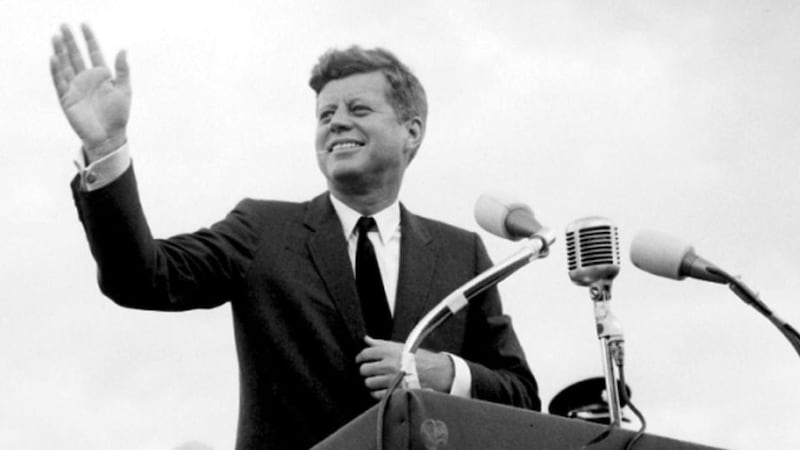JFK called his visit to Ireland in June 1963 "the happiest days of my life". As his sister, Jean Kennedy Smith, recalls in these pages, he watched film footage of the homecoming over and over again.
There were few happy days left in the life of the US president, who was assassinated five months later in Dallas. He came to Ireland as part of a European tour; his previous stop, Berlin, saw him cement the US’s relationship with Europe, stating “ich bin ein Berliner”.
By visiting the birthplace of his ancestors, he was stating his Irishness in a visit described as “strewn with shamrocks” in a US embassy document.

It is difficult today to convey the excitement and euphoria of the homecoming 50 years ago. Imagine Obama’s visit and multiply it by a thousand. It was our first international media event and a considerable undertaking; RTÉ television had been established only 18 months before and equipment had to be borrowed from the BBC.
Lemass was taoiseach, de Valera was president and we were an innocent, agrarian society which had skipped the industrial revolution. The early 1960s were an interlude between the devastating mass emigration of half a million people in the 1950s and the gradual dawning of transformative social change.
In 1963, with the IRA momentarily dormant and the North prosperous, the Irish economy was looking up and preparing to boom. Irish exports rose by 50 per cent between 1960 and 1963, making Kennedy’s visit a kind of blessing on the Irish who were embracing the American way at home, not just in America.
Awestruck, excitable crowds gathered when Kennedy toured the country in his helicopter and in a big American open-topped limousine from Dublin to Wexford, then on to Limerick, Cork and Galway, with people who lined the route getting close-up views of the tanned president with his bright white teeth.
Few people had TVs and fewer had telephones. A telephone “hotline” to the White House had to be installed at the Kennedy homestead in Dunganstown, Co Wexford.
So while many watched it on TV, many more saw it for themselves in real life, in contrast to today’s digital media where we’d be instagramming and tweeting the visit rather than experiencing it.
The closed nature of society seemed to open up merely by the grace of JFK’s charismatic presence. The swinging Sixties were just taking off in the US and London, but Ireland hadn’t left the 1950s mentally. In 1963, only those who could afford it were educated past the age of 14 (free secondary education would be introduced only in 1967).
Catholicism was so powerful in 1963 that the Sunday before JFK's visit Primate of All Ireland John Charles McQuaid ordained 60 priests; 13,000 Irishwomen were nuns, the top profession for women ahead of teaching and nursing. On June 3rd, RTÉ had shut down immediately after the 9pm news to mark the death of Pope John XXIII. The Catholic Church controlled minds: Edna O'Brien's The Lonely Girl had been banned the year before.
JFK’s picture may have taken pride of place on mantelpieces and walls beside the pope’s but he was a harbinger of the new openness that would ultimately bring greater sexual and intellectual freedom. He was urging us towards the broad notion of freedom that would ultimately see us question authority.
With the 1960s came the inkling of a possibility that the good life and ambition embodied by the Kennedys was an option for everyone. More than anything, it was the first great boost to Irish self-esteem.
While many other moments – such as the visits of Reagan, Clinton and Obama – would play on the fiddle of JFK’s magic visit, no Irish event afterwards would alter the way we viewed ourselves as did a tanned man in a shiny limousine travelling through the hedgerows of Ireland.










